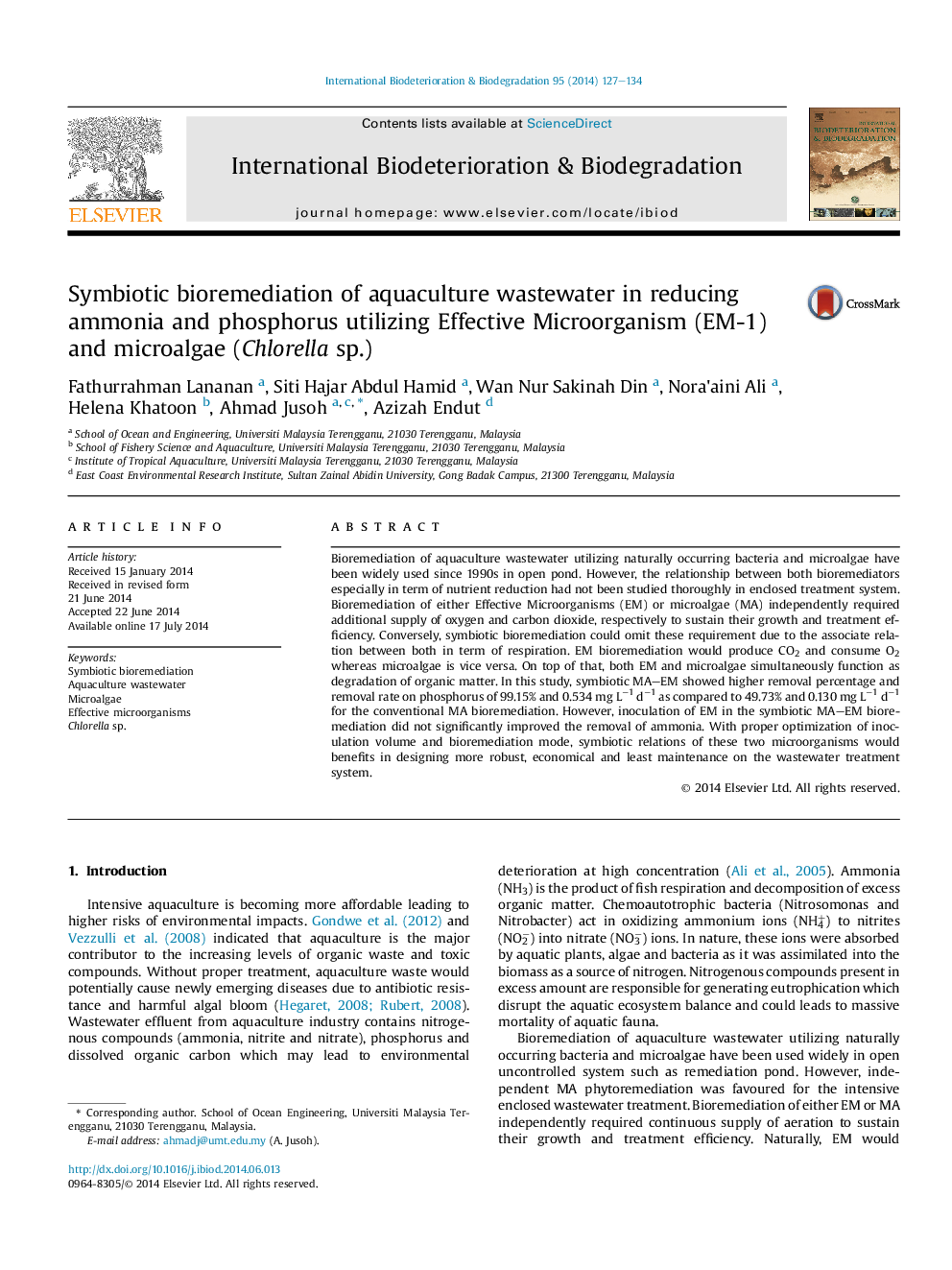| کد مقاله | کد نشریه | سال انتشار | مقاله انگلیسی | نسخه تمام متن |
|---|---|---|---|---|
| 4364612 | 1301716 | 2014 | 8 صفحه PDF | دانلود رایگان |

• Bioremediation of aquaculture wastewater was compared between MA, EM and symbiotic MA–EM mode.
• Various inoculation of MA and EM were performed for the optimization.
• Growth performance and the removal of ammonia and phosphate were determined.
• Symbiotic MA–EM had higher phosphate removal as compared to MA phytoremediation.
• EM inoculation in symbiotic MA–EM bioremediation did not improve ammonia removal.
Bioremediation of aquaculture wastewater utilizing naturally occurring bacteria and microalgae have been widely used since 1990s in open pond. However, the relationship between both bioremediators especially in term of nutrient reduction had not been studied thoroughly in enclosed treatment system. Bioremediation of either Effective Microorganisms (EM) or microalgae (MA) independently required additional supply of oxygen and carbon dioxide, respectively to sustain their growth and treatment efficiency. Conversely, symbiotic bioremediation could omit these requirement due to the associate relation between both in term of respiration. EM bioremediation would produce CO2 and consume O2 whereas microalgae is vice versa. On top of that, both EM and microalgae simultaneously function as degradation of organic matter. In this study, symbiotic MA–EM showed higher removal percentage and removal rate on phosphorus of 99.15% and 0.534 mg L−1 d−1 as compared to 49.73% and 0.130 mg L−1 d−1 for the conventional MA bioremediation. However, inoculation of EM in the symbiotic MA–EM bioremediation did not significantly improved the removal of ammonia. With proper optimization of inoculation volume and bioremediation mode, symbiotic relations of these two microorganisms would benefits in designing more robust, economical and least maintenance on the wastewater treatment system.
Journal: International Biodeterioration & Biodegradation - Volume 95, Part A, November 2014, Pages 127–134